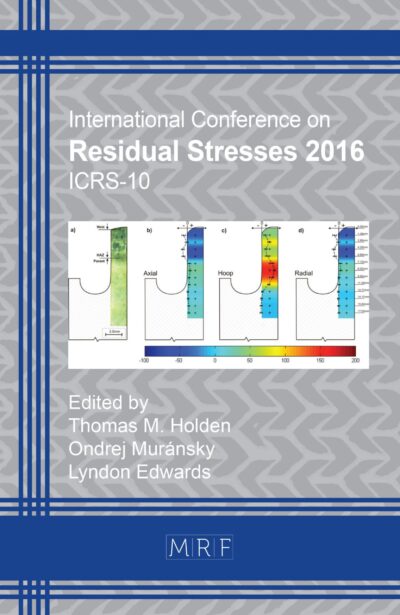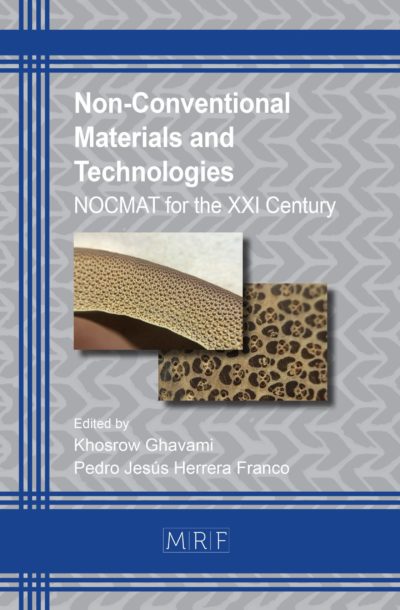Material flow during constrained friction processing and its effects on the local properties of AM50 rods
Camila Caroline de Castro, Ting Chen, Diogo de Campos Fernandes, Benjamin Klusemann
Abstract. Constrained friction processing (CFP) is a novel technique for producing fine-grained rods from lightweight materials such as aluminum and magnesium alloys. In this process, a rotating shoulder is plunged into the base material, extruding it into the shoulder’s cavity while being constrained by the rotating probe. The resulting shear forces and heat generation induce metallurgical transformations, such as dynamic recrystallization, promoting grain refinement. Magnesium rods processed by CFP exhibit a characteristic ultrastrong texture because of the anisotropy of the hexagonal close-packed structure. In this study, the material flow during CFP of AM50 was analyzed based on local texture variations along the rod, determined using electron backscatter diffraction. The resulting mechanical behavior was evaluated using Vickers microhardness and quasi-static tensile tests on samples taken from two positions along the rod. The results show a strong dependence of local mechanical properties on the texture and anisotropy of the processed material. Significant improvements in ductility were observed, especially in the outer regions of the rod along the plunging direction, showing an elongation at break determined at 47%. This highlights the critical role of CFP-induced texture in determining mechanical properties and indicate the possibility of texture tailoring achieved by the control of critical process parameters that rules the material flow.
Keywords
Constrained Friction Processing, Severe Plastic Deformation, Material Flow, Magnesium Alloy, Mechanical Behavior
Published online 5/7/2025, 9 pages
Copyright © 2025 by the author(s)
Published under license by Materials Research Forum LLC., Millersville PA, USA
Citation: Camila Caroline de Castro, Ting Chen, Diogo de Campos Fernandes, Benjamin Klusemann, Material flow during constrained friction processing and its effects on the local properties of AM50 rods, Materials Research Proceedings, Vol. 54, pp 1777-1785, 2025
DOI: https://doi.org/10.21741/9781644903599-191
The article was published as article 191 of the book Material Forming
![]() Content from this work may be used under the terms of the Creative Commons Attribution 3.0 license. Any further distribution of this work must maintain attribution to the author(s) and the title of the work, journal citation and DOI.
Content from this work may be used under the terms of the Creative Commons Attribution 3.0 license. Any further distribution of this work must maintain attribution to the author(s) and the title of the work, journal citation and DOI.
References
[1] C. Schilling, J.F. Dos Santos, Method and device for linking at least two adjoining work pieces by friction welding, European Patent Office. EP1230062 (2000).
[2] C.C. De Castro, J. Shen, J. Fernandez, B. Klusemann, Microstructural development of as-cast AM50 during Constrained Friction Processing: Grain refinement and influence of process parameters, J. Mater. Process. Tech. 318 (2023) 118018. https://doi.org/10.1016/j.jmatprotec.2023.118018
[3] T. Chen, B. Fu, J. Shen, U.F.H.R. Suhuddin, B. Wiese, M. Huang, YuandingWang, J.F. dos Santos, J.P. Bergmann, B. Klusemann, Application of novel constrained friction processing method to produce fine grained biomedical Mg-Zn-Ca alloy, J. Magnes. Alloy. 12 (2024) 516–529. https://doi.org/10.1016/j.jma.2023.10.007
[4] S.B.M. Lage, Otimização dos parâmetros de soldagem a ponto por Fricção (FSpW) da liga AlMgSc e avaliação das propriedades mecânicas estáticas e dinâmicas, Universidade Federal de Sao Carlos, 2017. https://repositorio.ufscar.br/handle/ufscar/9291
[5] J. Shen, S.B.M. Lage, U.F.H. Suhuddin, C. Bolfarini, J.F. dos Santos, Texture Development and Material Flow Behavior During Refill Friction Stir Spot Welding of AlMgSc, Metall. Mater. Trans. A Phys. Metall. Mater. Sci. 49 (2018) 241–254. https://doi.org/10.1007/s11661-017-4381-6
[6] B. Fu, J. Shen, U.F.H.R. Suhuddin, T. Chen, J.F. dos Santos, B. Klusemann, M. Rethmeier, Improved mechanical properties of cast Mg alloy welds via texture weakening by differential rotation refill friction stir spot welding, Scr. Mater. 203 (2021) 114113. https://doi.org/10.1016/j.scriptamat.2021.114113
[7] J.F. Nie, K.S. Shin, Z.R. Zeng, Microstructure, Deformation, and Property of Wrought Magnesium Alloys, Springer US, 2020. https://doi.org/10.1007/s11661-020-05974-z
[8] F.R. Elsayed, N. Hort, M.A. Salgado-Ordorica, K. Kainer, Magnesium permanent mold Castings optimization, Mater. Sci. Forum. 690 (2011) 65–68. https://doi.org/10.4028/www.scientific.net/MSF.690.65
[9] A. International, ASTM E8M: Standard Test Methods for Tension Testing of Metallic Materials, (2024). https://doi.org/10.1520/E0008
[10] A. International, ASTM E92: Standard Test Methods for Vickers Hardness and Knoop Hardness of Metallic Materials, (2017). https://doi.org/10.1520/E0092-17
[11] L. Marsavina, F. Iacoviello, L. Dan Pirvulescu, V. Di Cocco, L. Rusu, Engineering prediction of fatigue strength for AM50 magnesium alloys, Int. J. Fatigue. 127 (2019) 10–15. https://doi.org/10.1016/j.ijfatigue.2019.05.028
[12] T. Zhao, Y. Hu, Y. Wang, Y. Dai, T. Zheng, Z. Li, K. Li, B. He, C. Zhang, F. Pan, Deformation mechanism of high ductility Mg-Gd-Mn alloy during tensile process, J. Magnes. Alloy. (2023). https://doi.org/10.1016/j.jma.2023.10.004













